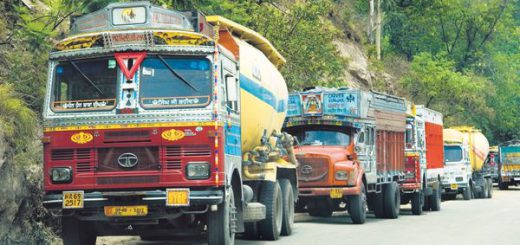Road Transport System in India and Advantages
India’s vast 5.8 million km road transport network is necessary for the country’s transport system to operate. These extensive roads manage almost two-thirds of freight and an impressive 90% of passenger traffic, emphasizing their critical importance. However, within these impressive statistics lies a complex combination of progress and challenges. It influences the current state and future possibilities of India’s road transport infrastructure.
The Development of Highways
In addition to national roads, high-speed highway lanes have become more prevalent in India in recent times. These access-controlled highways are shorter overall than highways. But they nevertheless provide a free flow of traffic by limiting points of entry and departure, which speeds up travel times.
The Yamuna Highway, which connects Delhi and Agra, the Mumbai-Pune highway, the Ahmedabad-Vadodara corridor, and the Agra-Lucknow Highway are a few of the key operational segments. The largest project under construction in the road transports sector right now is the 1,300-kilometer Delhi-Mumbai Highway. Which, when finished, should cut the average travel time between the two cities to only 12 hours.
In addition to improving road transport connections and cutting down on travel times, these highways act as development accelerators. Along their paths, they resulted in the emergence of new smart cities, logistics centers, and industrial zones in the surrounding areas.
The Support System: State and Rural Roads
State highways and main district roads serve as the key connections between various areas within each state. At the same time, national highways serve as the arterial network. India had around 500,000 km of important district roads and over 176,000 kilometers of state highways as of 2019. These routes facilitate the transportation of products and people between rural and semi-urban regions and the main national highway networks.
In addition, India has more than 5 million kilometers of rural roads constructed over many years to link rural communities in the nation’s hinterlands with adjacent towns and cities. With the introduction of the Pradhan Mantri Gram Sadak Yojana in 2000, a centrally financed program designed to give disconnected villages access to all-weather roads, the development and upkeep of the rural road transport network experienced a significant boost.
Advantages of Road Transport
Door-to-Door Service:- Road transport minimizes handling and possible damage during transit by providing direct collection and delivery of products.
Cost-Effective:- Businesses looking to cut costs will find road transport appealing as it is often less expensive than alternative modes like rail or air.
Flexibility:- Different types of goods, routes, and timetables may be accommodated by road transport, which offers flexibility and customization.
Tracking and Monitoring:- Accurate and clear cargo updates are provided to clients via modern road transport, which frequently has real-time vehicle tracking capabilities.
Infrastructure and Accessibility:- Widespread access is made possible by the extensive road networks found in many nations, which promote effective internal and international trade.
Obstacles and Restrictions:- Even though road transport development has advanced significantly over the previous 20 years, India’s road network still faces major obstacles that reduce its effectiveness and overall productivity:
Quality and Maintenance:- Although the rate of highway development has increased, quality problems, such as poor construction, a lack of routine maintenance, and overloading, are impeding the growth in efficiency.
Limited Logistics Infrastructure:- Rest Areas, truck terminals, and warehousing facilities are examples of supporting logistics infrastructure that is lacking on the national highway network, despite improvements in connectivity of road transport. These infrastructure deficiencies impede freight movement efficiency along the road network.
Creating the Path Forward
Understanding how important it is to have a strong road transport network, the government has launched several initiatives and policy campaigns to solve issues and hasten the creation of a top-notch road system.
An ambitious umbrella plan known as the flagship Bharatmala Pariyojana program was eventually introduced in 2017. It is to build over 65,000 km of new national roads and motorways at an estimated cost of about Rs. 5 trillion ($70 billion). This comprises motorways to relieve traffic on existing highway segments and coastal and border highways.
The Road Ahead
Over the past 20 years, India’s road transport network has advanced significantly, improving regional interconnectedness. Still, there are a few more major junctures in the voyage to come. Transforming India’s road transport ecosystem will depend on achieving infrastructure goals through different initiatives. Initiatives like Bharatmala, resolving quality concerns, increasing road safety, and easing urban bottlenecks will transform road transport.
India can fully use the potential of its extensive road transport network with continued policy attention, increased investments, and the adoption of international best practices. In addition to providing the foundation for internal economic growth, effective road connectivity makes Indian companies more globally competitive. It also facilitates the smooth flow of people and commodities.
As India’s economy continues to grow in the next few years. Meeting the increasing needs of freight and passenger road transport will depend on having a strong, safe, and effective road transport infrastructure. Although there is still a long way to go. India has great potential to establish a top-notch highway network that will fuel the country’s ambitions for growth and development.




Best knowledgeable blog thanks trucksuvidha team.
Your valuable feedback means a lot to us. Keep reading latest updates on our blog and share your valuable suggestions.